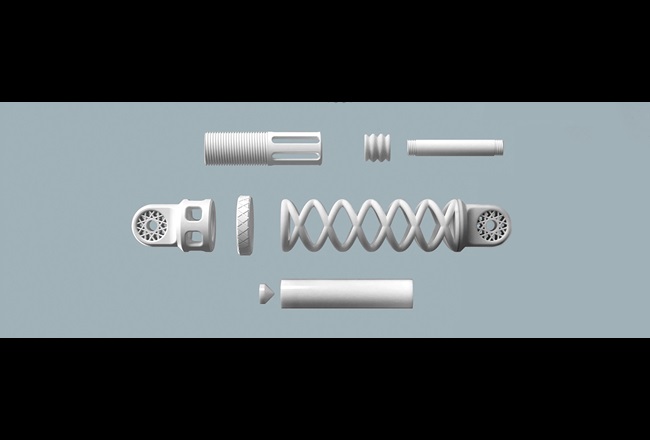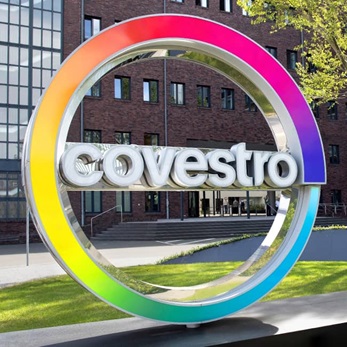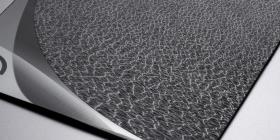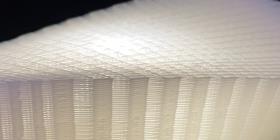
3D-printed shock absorber with high degree of functionality
First flexible materials for selective laser sintering
The outer spring of the 40 x 7 centimeter part is made of powdered thermoplastic polyurethane (TPU). It was shaped layer by layer using selective laser sintering (SLS), a common printing technique that creates a three-dimensional part one layer at a time using fine powder as the print medium. The powder is sintered with a laser as a heat source to fuse the material powder together.
As a leading supplier of high-tech polymers, Covestro develops customized polymer materials for common manufacturing processes in 3D printing. TPU powders from Covestro, one of the first flexible materials available for SLS, created an outer spring that is notable for its elasticity and high abrasion resistance. This provides an advantage over materials commonly used in SLS, which tend to be less tough and elastic.
An exciting new development in 3D printing is the capability to combine different materials with various tailor-made properties in one product. This has enabled us to significantly expand the possibilities of additive production and its areas of application.
Versatile materials for fused filament fabrication and digital light process
The adjusting screw inside the shock absorber must be very strong and its surface needs to meet performance requirements. For this reason, it is made from filaments of robust polycarbonate material from Covestro using the fused filament fabrication (FFF) process. In FFF, a plastic filament is liquefied by heating in order to deposit lines and dots onto a surface, where they harden when cooled. By repeating this process numerous times, the adjusting screw was created layer by layer.
The air chamber in the interior is created from a liquid polyurethane resin from Covestro. Digital light processing (DLP) is a proven method for forming components with filigree structures, such as the air spring in the shock absorber. In this additive manufacturing process, a digital projector is used to expose liquid resin to a light source, creating a thin, solid layer of resin. This process is repeated, layer by layer, to create the 3D air chamber.
The individual components of the shock absorber are joined together, creating a complex object that would have not been possible with conventional production processes.
Additive advantages
3D printing, also known as additive manufacturing, is evolving from rapid prototyping to mass production. Due to their diverse properties, filaments, powders and liquid raw materials are suitable for many industries and applications.
The shock absorber showcases how one end product can be tailored to customer needs with customized properties from very flexible to tough, using different chemistries and additive manufacturing technologies.
Additive manufacturing is a fully digital production process that makes it possible to create objects without tools, resulting in less waste compared to traditional production methods. With the digital process, companies can decentralize manufacturing operations and produce three-dimensional products closer to their customers. This enables them to bring products to market more quickly and reduce shipping costs.
- Covestro’s TPU powder is ideal for sintering 3D objects that are both tough and flexible.
- The melting and hardening behavior of TPU results in a permanent bonding between the applied layers during the FFF process, while the outstanding abrasion resistance and elasticity of TPU are maintained.
- Polycarbonate is a great material choice for the FFF process, as it offers high impact strength, excellent thermal stability, and inherent flame retardancy.
- Polyurethane resins for DLP allow the opportunity to customize performance properties such as toughness, flexibility, and chemical and weathering resistance.











